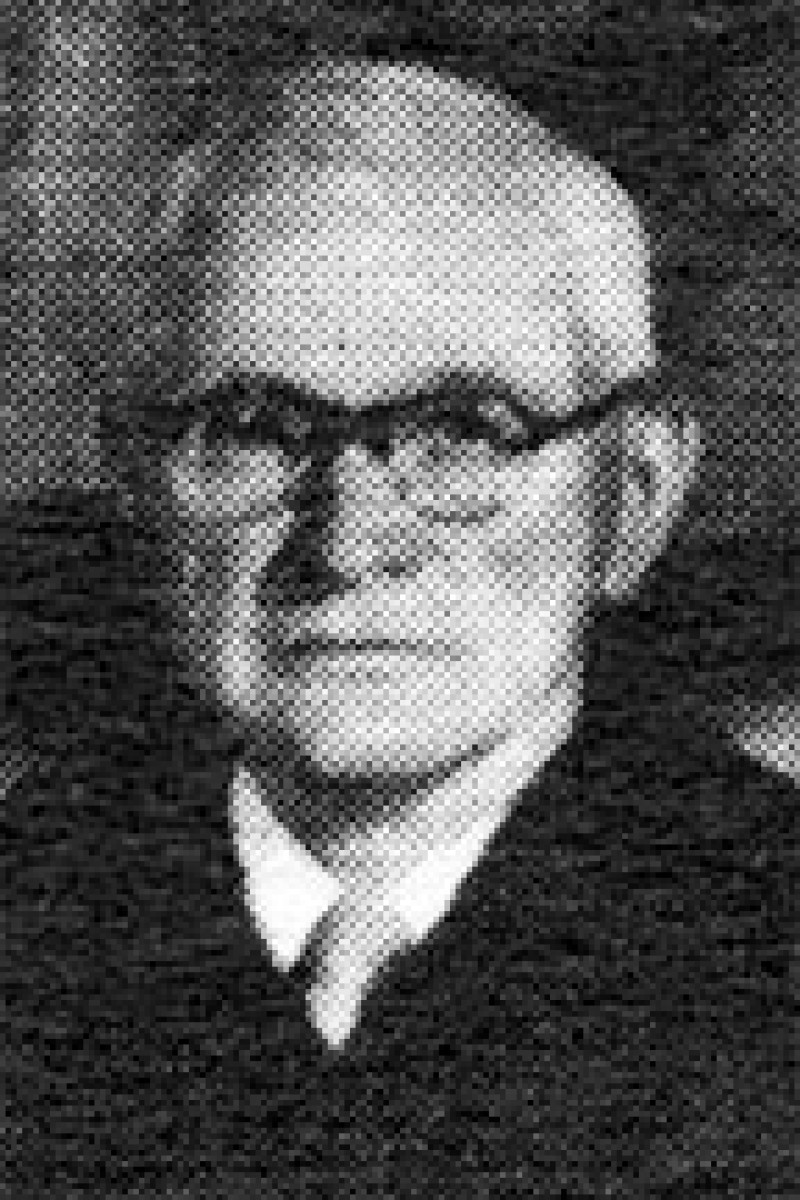John Howard Lamneck
John Howard Lamneck wrote, “Liberty is a necessity for all men. But liberty will not maintain itself. All citizens must join their interests to preserve it.” He lived his life according to this belief and made many contributions to the preservation of liberty in his labors as a lawyer, judge and writer.
Lamneck was born in Port Washington, Ohio, on May 3, 1891 to Philip and Mary Lamneck. He studied to become a schoolteacher, acquiring certificates by examination for grade school teaching in 1915 and high school teaching in 1916. He taught at and was later principal and superintendent of the high school in the Port Washington schools.
In 1915, Lamneck began to study law with local attorney T.J. Russell of Newcomerstown. He supplemented this with a law course with the LaSalle Extension University of Chicago, Ill. At this time, one could study with a lawyer and if one passed the bar, become an attorney. Lamneck passed the Ohio bar Dec. 5, 1918.
In 1917, Lamneck joined the Ohio Industrial Commission as a payroll auditor. He was later named by Gov. Victor Donahey as chief of the division of Workmen’s Compensation and as assistant director of Industrial Relations. He also managed the Akron and Toledo branches of the Industrial Commission for six years.
Lamneck was elected to his first public office in 1924, when he won a seat on the Tuscarawas County Probate and Juvenile Court, making him, at 33, the youngest probate jurist in the state. He was elected to four additional terms in 1928, 1932, 1936 and 1940. He next ran for Tuscarawas County Court of Common Pleas and was elected in 1944 to a six-year term. He resigned this position in 1949 to accept an appointment by Gov. Frank J. Lausche as director of public welfare.
On Nov. 17, 1953, Gov. Lausche appointed Lamneck to the Supreme Court of Ohio to fill the position of the recently deceased Justice Edward S. Matthias. One of the most significant cases brought before the court in 1954 was R. K. O. Radio Pictures, Inc. v. Department of Education of State of Ohio, Division of Film Censorship.
Related to this case, the Division of Film Censorship was established in 1913 and transferred to the Ohio Department of Education in 1921, continuing until 1954. It evaluated thousands of movies prior to release in Ohio. In a series of cases between 1952 and 1954, the U.S. Supreme Court declared invalid the tests used by the division to censor films, thus challenging the constitutionality of the Ohio Motion Pictures Censorship Act based on the First and 14th Amendments to the U.S. Constitution. Lamneck wrote the majority opinion in the RKO case, stating that the censorship provisions of the Ohio act were unconstitutional, but as there were two Justices who disagreed, the Court could not declare it unconstitutional. The Court decided for the plaintiffs, ruling that, “any censoring order made by the Department of Education pursuant to the act is ‘unreasonable’ and ‘unlawful.’”
In the November 1954 election, Lamneck lost his seat to John M. Matthias, son of Edward Matthias, whom Lamneck had been appointed to replace. This was the only election Lamneck lost in his extensive public career. In 1960, Lamneck left private law practice to run for a position on the Tuscarawas County Court of Common Pleas. He won that election and ran unopposed six years later. He retired from the bench in 1972, but continued to be active in local affairs.
Lamneck was the author of several legal texts including, Ohio Probate Digest and Practice Manual, The Family, Divorce and the Juvenile Court in Ohio, Ohio Workmen’s Compensation and the Ohio Juvenile Court and Child Welfare Manual. In addition to his more erudite tomes, he also authored several titles of more local historical interest, including “From Lamplight to Satellite” (1961), and “These Are My Jewels” (1966). In 1943, Lamneck was awarded an honorary doctor of laws degree from Moravian College in Bethlehem, Pa.
Lamneck married Bertha Thomas in 1912 and they had three children. Lamneck died Jan. 11, 1975 in New Philadelphia. He is buried at Union Cemetery in Port Washington.

b. May 3, 1891
d. Jan. 11, 1975
113th Justice of the Supreme Court of Ohio
TERM
Nov 17, 1953
to Nov 1, 1954
